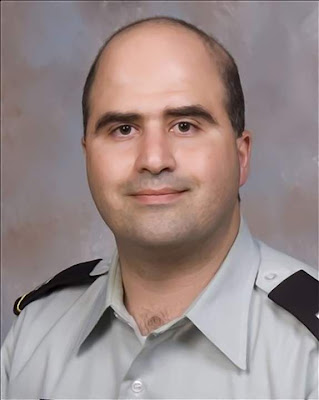As the media continues to focus on the horrific shooting of a US lawmaker and others in Arizona, we look back at the worst shooting sprees in U.S. history.
The United States - the only First World country where guns are sacrosanct. The recent shooting spree in Tucson, Arizona, has some talking about gun control laws. Others are pushing to have more guns in the hands of the public for self-defence. Who's right? You tell us.
University of Texas Massacre (Aug. 1, 1966)
Toll: 16 killed, 32 injuredThe infamous tower sniper. Charles Whitman, a former Marine who grew up in a dysfunctional family, murdered his wife and mother at their houses. He then proceeded to the 307-foot tower of the University of Texas at Austin and began gunning down targets from there. Ultimately, he was shot and killed by the police. Pictured are the weapons used by Whitman during the carnage.
San Ysidro McDonald's Massacre (July 18, 1984)
Toll: 21 killed, 19 injuredJames Huberty entered a McDonald's restaurant in the San Ysidro section of San Diego, California, and unloaded 257 rounds of ammunition before he was taken out by a SWAT team sniper. The victims of the carnage were mostly Mexican and Mexican-American between the ages of 8 months and 74 years.
Edmond Post Office Massacre (August 20, 1986)
Toll: 14 killed, 6 injuredSaid to have inspired the phrase "going postal", disgruntled postal worker Patrick Sherrill went on a lethal rampage with two .45 calibers at his workplace. He began by shooting one of the supervisors who had reprimanded him the day before. In the end, he took his own life.
Luby's Massacre (October 16, 1991)
Toll: 23 dead, 20 injuredGeorge Hennard drove his pickup truck through the front window of a Luby's Cafeteria in Texas. He yelled, "This is what Bell County has done to me!" before he began to shoot at patrons. The carnage ended when he was cornered and wounded by authorities, causing him to commit suicide.
Columbine High School Massacre (April 20, 1999)
Toll: 13 dead, 24 injuredThe most famous (or rather infamous) high school shooting. Two students, Eric Harris and Dylan Klebold, gunned down fellow students and a teacher before turning their firearms on themselves. Fortunately, bombs they rigged failed to detonate or the toll would've been much higher. The incident sparked an intense national debate on gun control, violent video games, bullying, and mental illness.
Virginia Tech Massacre (April 16, 2007)
Toll: 32 dead, 25 injuredThe single deadliest shooting spree in U.S. history. Seung-Hui Cho (pictured), a university student with a history of mental illness, shot fellow students and faculty members at the Virginia Polytechnic Institute and State University. He murdered two students at a residence hall and then proceeded to an academic building where most of the killings would take place.
Fort Hood Massacre (November 5, 2009)
Toll: 13 dead, 30 injuredA psychiatrist that likely wasn't quite right in the head himself. Army Major Nidal Malik Hasan (pictured), who served as a psychiatrist at Fort Hood, Texas, allegedly opened fire on military personnel at his workplace. Hasan was subdued after being shot by a civilian police officer who then handcuffed him. He was allegedly influenced by radical anti-American cleric Anwar al-Awlaki.
Tucson Massacre (January 8, 2011)
Toll: 6 dead, 14 injuredDemocratic Congresswoman Gabrielle Giffords was meeting with her constituents, when Jared Loughner (pictured) allegedly opened fire on her and those assembled. The congresswoman was hit in the head, but miraculously survived and is currently recuperating at a hospital. Others, including a federal judge (John Roll, chief federal judge of Arizona) and a 9-year-old girl (Christina Green, who was born on 9/11), were not so lucky. The incident sparked a national debate over the level of and possible effects of anti-government vitriol coming from many U.S. conservatives.
Disclaimer :-
We acknowledge that though we try to report accurately,we cannot verify the absolute facts of everything posted. Postings may contain fact, speculation or rumor. We find images and stories from the Web that are believed to belong in the public domain. If any stories or images that appear on the site are in violation of copyright law, please email and we will remove the offending information as soon as possible.








